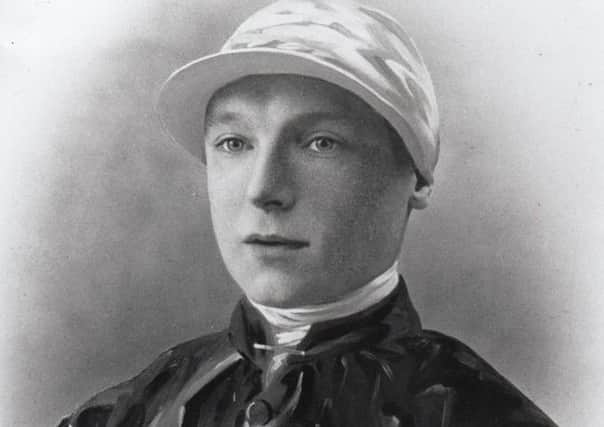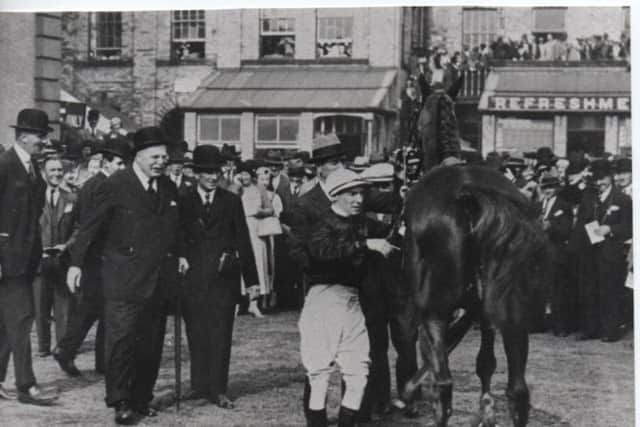The Nostalgia column with Margaret Watson


They wished to display it in the club alongside that of another illustrious member, Sergeant John Willie Ormsby VC, who had been a friend of Tommy’s and who had had much in common with him.
Both men came from poor Irish immigrant families, attended the same school, St Paulinus in Westtown, and fought courageously in two world wars, John Willie in World War One and Tommy in World War Two.
Advertisement
Hide AdAdvertisement
Hide AdNearly everyone in the club knows the heroic story of Sgt Ormsby VC, and how he gained the Victoria Cross, but few younger members knows the Tommy Weston story which is an inspiring one and one which club officials now want to tell.


Tommy was a four-stone weakling, who, at the age of 13 lost his first job in a local foundry because he wasn’t big enough or strong enough to handle the manual work.
But by sheer determination, discipline and dedication, plus the brilliant use of his natural talent with horses, he was later to race his way to the top in the sport of kings.
His name once demanded the attention of kings and queens and earned him the respect and admiration of millions of working men throughout the country, but he is best known for his two famous Derby wins – on Sansovino in 1924 and Hyperion in 1933.
Advertisement
Hide AdAdvertisement
Hide AdDuring his racing career he rubbed shoulders with royalty, mixed with millionaires and film stars, but never forgot his roots and returned to Dewsbury often to drink with his old friends in the Irish Nash and the Trades and Friendly, better known as “The Sawdust”, now sadly closed.
At the height of his career he presented St Paulinus Church with ten paintings of The Stations of the Cross, and although his name may now be forgotten, these paintings live on as a silent tribute to one of the world’s greatest sporting personalities.
Tommy became Champion Jockey in 1926 and could have achieved the title many times over if he had not interrupted his racing career to do war service. He was in his racing prime when he volunteered for the Navy on the first day war broke out in 1939.
He was made a chief petty officer and put in charge of a motor torpedo boat searching for submarines, narrowly missing death on a number of occasions, and while serving in Egypt his boat was sunk and the wounded Tommy spent days in the water waiting to be rescued, his body mutilated with fish bites.
Advertisement
Hide AdAdvertisement
Hide AdTommy’s love of horses stemmed from his childhood when he helped his father, a drayman in the local railway yards, and continued when he lost his job in the foundry and he became a chain-boy working with his father among the horses.
He left Dewsbury aged 14 to try his luck at the Middleham stables and after a month’s trial, signed his indentures, making his racing debut, aged 15 on Black Crag.
In his heyday he lived in luxury in a large detached house in Newmarket, not far from the spot where now stands a life-sized statue of the world famous Hyperion, and later a street in Newmarket – Tommy Weston Way – was named after him.
In one season alone Tommy won an astonishing 149 races and was placed second or third in more than 200. He won every classic in the calendar, and every classic race he entered he won first time.
Advertisement
Hide AdAdvertisement
Hide AdTommy counted among his friends, film stars like Bing Crosby, Fred Astaire, George Formby and many more, but he was always more at home in Dewsbury than anywhere else.
When returning home, he always stayed with his sister, the late Mrs Evelyn Clough, former landlady of the Crackenedge Hotel, Dewsbury, or his two nephews, Gordon and Derek Clough.
He always travelled in a chauffeur-driven limousine in an era when only royalty and the very rich travelled that way, and he always tried to make it home at Christmas for Midnight Mass at St Paulinus Church.
Old age and failing health did not dim Tommy’s memories of triumphant victories like the Derby, the St Leger, the Gold Cup, the Oaks, the Ebor Handicap and the 2,000 guineas, and he spoke of them often when visited by his relatives from Dewsbury.
Advertisement
Hide AdAdvertisement
Hide AdTommy made many friends among the jockeys he raced with, and in the 1920s he brought many of them to Dewsbury, including Sir Gordon Richards, to take part in a charity event to raise funds for Dewsbury’s new hospital.
I will be writing more about this important charity event in future columns which, I hope will remind us further of the Dewsbury lad who won his first race at 15 and the Derby when he was 21.
Let the younger members of the Irish Nash tell this story to their children and their grandchildren so that the name of Tommy Weston, like that of John Willie Ormsby VC, will never be forgotten.